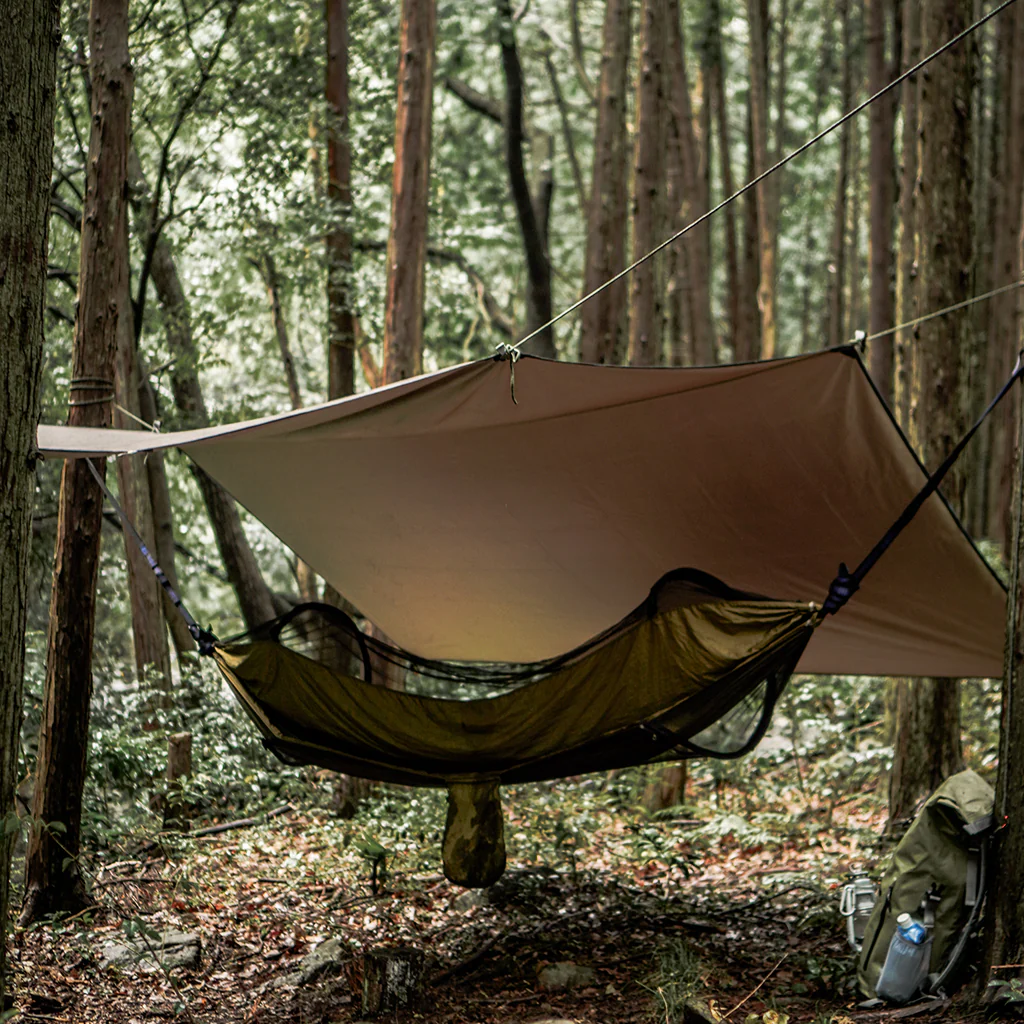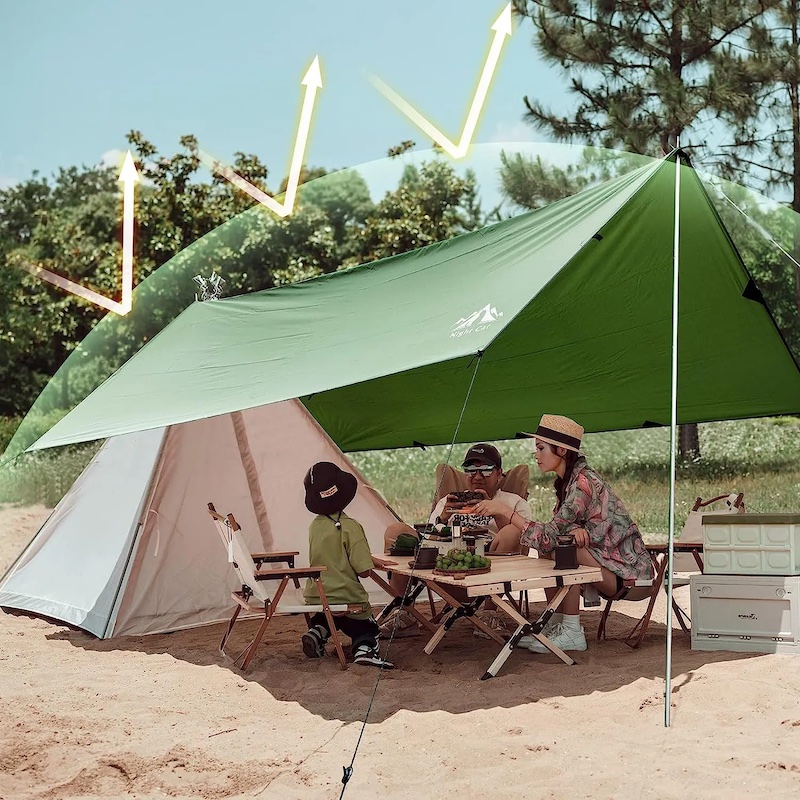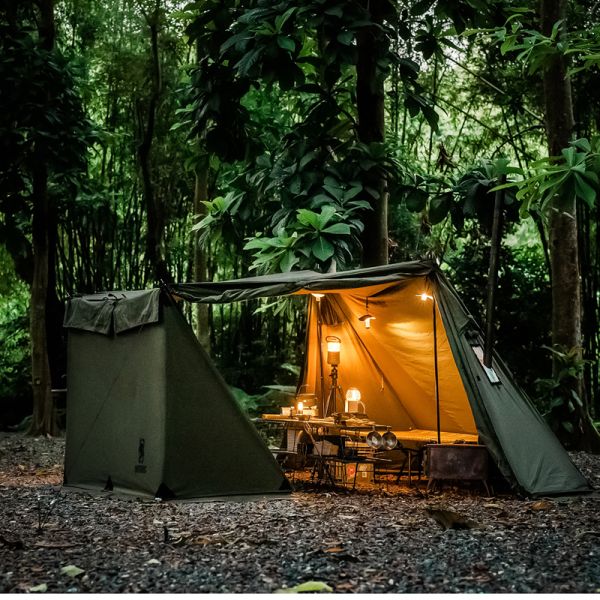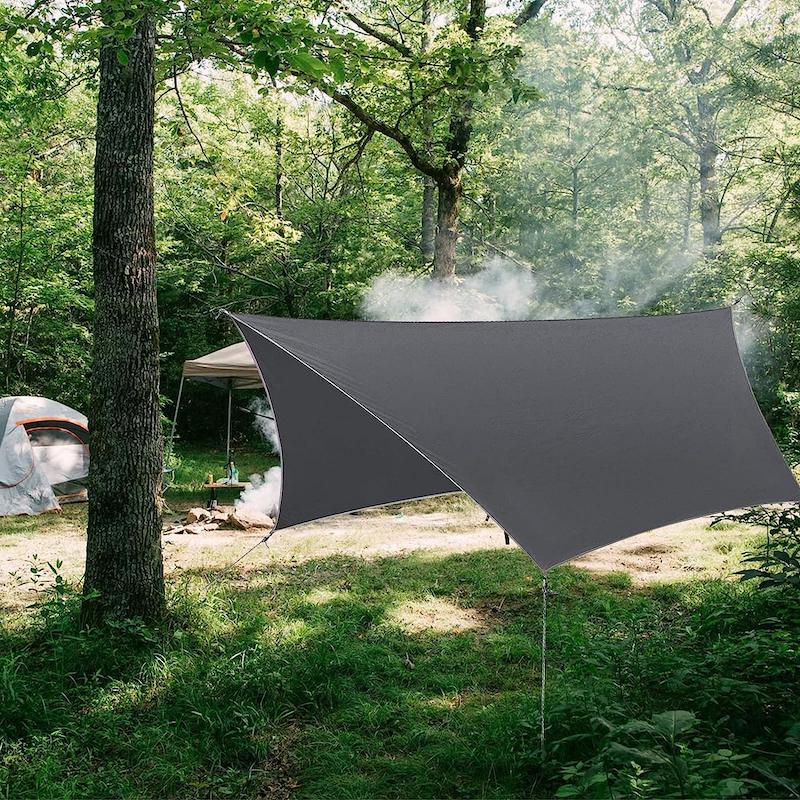Introduction
Camping is a beloved outdoor activity that allows individuals to connect with nature and escape the hustle and bustle of daily life. While traditional tents are a popular choice for shelter while camping, many outdoor enthusiasts are turning to tarps as a lightweight, versatile, and cost-effective alternative. In this comprehensive guide, we will explore the benefits of camping with a tarp, as well as provide tips, tricks, and techniques for making the most of your tarp camping experience.
Part 1: The Benefits of Camping with a Tarp
Level 1: Durability and Versatility
One of the primary benefits of camping with a tarp is its durability and versatility. Unlike traditional tents, which are often made of delicate materials that can easily tear or puncture, tarps are typically constructed from heavy-duty fabrics that are designed to withstand the elements. Additionally, tarps can be pitched in a variety of configurations to provide protection from rain, wind, and sun, making them a versatile and adaptable shelter option for campers.
Level 2: Lightweight and Compact
In addition to their durability and versatility, tarps are also incredibly lightweight and compact, making them an ideal choice for backpackers and minimalist campers. When properly folded and stored, a tarp can occupy minimal space in a backpack, allowing for greater flexibility and freedom of movement while hiking or exploring the great outdoors.
Part 2: Choosing the Right Tarp for Camping
Level 1: Materials and Construction
When choosing a tarp for camping, it’s important to consider the materials and construction of the tarp. Most camping tarps are made from nylon, polyester, or polyethylene, each of which offers different benefits in terms of durability, water resistance, and weight. Additionally, tarps come in a variety of sizes and shapes, allowing campers to select the best option for their specific needs and preferences.
Level 2: Additional Features
In addition to considering the materials and construction of a tarp, campers should also take into account any additional features that may be beneficial for their camping experience. These features may include reinforced grommets for securing guy lines, reflective elements for increased visibility at night, and built-in storage pockets for keeping small items organized and easily accessible.
Part 3: Setting Up Your Tarp Shelter
Level 1: Basic Tarp Configurations
There are several basic tarp configurations that can be utilized to create a shelter while camping. These include the A-frame, the lean-to, the diamond, and the tarp tent. Each configuration offers different levels of protection and ventilation, allowing campers to customize their shelter to suit the specific conditions of their camping environment.
Level 2: Advanced Tarp Techniques
In addition to the basic tarp configurations, there are also several advanced tarp techniques that can be used to optimize the functionality and comfort of a tarp shelter. These techniques may include the use of additional guy lines for increased stability, the incorporation of natural features such as trees or boulders into the shelter design, and the use of adjustable poles to create a more spacious and open shelter.
Part 4: Tips for Camping Comfortably with a Tarp
Level 1: Insulation and Weatherproofing
Camping with a tarp requires careful consideration of insulation and weatherproofing to ensure a comfortable and enjoyable experience. This may include the use of a ground tarp or footprint to protect against moisture and cold, as well as the addition of a waterproof tarp liner or bivy sack to provide an extra layer of protection against rain and wind.
Level 2: Gear Organization and Storage
When camping with a tarp, it’s important to prioritize gear organization and storage to maximize the efficiency and functionality of your shelter. This may involve the use of hanging storage pockets, gear lofts, and equipment lines to keep essential items organized and easily accessible, as well as the strategic placement of gear and personal belongings within the shelter to optimize space and minimize clutter.
Part 5: Tarp Camping Safety and Maintenance
Level 1: Safety Considerations
While camping with a tarp can be a rewarding and enjoyable experience, it’s important to prioritize safety and awareness to minimize the risk of accidents and injuries. This may involve selecting a suitable campsite with minimal hazards such as dead trees and loose rocks, as well as the use of proper knot-tying techniques and equipment to secure the tarp and prevent it from blowing away in high winds.
Level 2: Tarp Maintenance and Care
Proper maintenance and care of your camping tarp are essential for ensuring its longevity and functionality. This may include regular cleaning and drying of the tarp to prevent mold and mildew growth, as well as the prompt repair of any tears, punctures, or worn areas to prevent further damage and deterioration.
Part 6: How to Set Up a Camping Tarp
When setting up a camping tarp, there are a few tips to keep in mind to ensure a successful and comfortable shelter. First, it’s crucial to find a suitable location for your tarp. Look for a spot that is flat and free of any potential hazards such as falling branches or rocks. Once you have found the perfect spot, lay out your tarp and secure the corners using stakes or heavy objects like rocks.
Next, consider the weather conditions and the direction of the wind. If it’s windy, position the tarp so that the wind is hitting the shortest side. If rain is in the forecast, make sure to angle one side of the tarp slightly lower than the other to allow for water runoff.
To secure the tarp, use a combination of stakes, guylines, and tensioners to make sure it is taut and secure. Adjust the tension as needed to keep the tarp from sagging or flapping in the wind. Finally, inspect the tarp for any tears or damage, and make any necessary repairs before settling in for the night.
Part 7: How to Use a Camping Tarp for Shelter and Protection
A camping tarp is a versatile and essential piece of gear for outdoor enthusiasts. Not only does it provide shelter from the elements, but it also offers protection for your camping gear and a comfortable space for relaxation. Here are a few ways to use a camping tarp for shelter and protection:
- Shelter: Set up the tarp as a makeshift tent by pitching it between trees or using trekking poles. This will provide you with a dry and comfortable space to sleep and relax during your camping trip.
- Gear protection: Use the tarp to cover your gear, such as your backpack, cooking equipment, and firewood, to shield them from rain or snow. This will keep your gear dry and in good condition for the duration of your trip.
- Sunshade: In hot and sunny weather, set up the tarp as a sunshade to provide a cool and shaded area for cooking, eating, or simply relaxing.
- Windbreak: Position the tarp as a windbreak to block strong winds and create a more comfortable camping environment. This will also help maintain a steady flame for cooking or keep your campfire from getting out of control.
With these uses in mind, a camping tarp is an invaluable tool for any camping trip, providing shelter, protection, and comfort in a variety of outdoor settings.
Part 8: Choosing the Right Camping Tarp for Your Outdoor Adventure
When it comes to choosing a camping tarp for your outdoor adventure, there are a few factors to consider to ensure you select the right one for your needs. Here are some key considerations to keep in mind:
Size: The size of the tarp will depend on the number of people it needs to accommodate and the available space at your campsite. Look for a tarp that offers enough coverage to protect you and your gear from the elements without being too bulky or heavy to pack.
Material: Camping tarps are typically made from a variety of materials, including nylon, polyester, and silnylon. Consider the weather conditions you are likely to encounter and choose a tarp made from a durable, waterproof material that will provide adequate protection from rain, wind, and sun exposure.
Weight: If you plan on backpacking or hiking to your campsite, the weight of the tarp is a crucial factor to consider. Look for a lightweight tarp that can be easily packed and carried without adding too much extra weight.
Versatility: Some camping tarps come with additional features such as reinforced corners, attachment points, and built-in guylines, which can add to their versatility and ease of use in various camping scenarios. Consider the features that are important to you and choose a tarp that meets your specific needs.
By keeping these considerations in mind, you can select a camping tarp that will provide you with reliable shelter, protection, and comfort during your outdoor adventures.
Conclusion
Camping with a tarp offers a wealth of benefits for outdoor enthusiasts, including durability, versatility, and lightweight portability. By carefully considering the materials and construction of a tarp, learning how to set up and maintain a tarp shelter, and implementing tips and techniques for a comfortable and safe camping experience, campers can make the most of their tarp camping adventures. With the knowledge and skills provided in this guide, you’ll be well-equipped to enjoy the great outdoors with a tarp as your trusty shelter companion.



